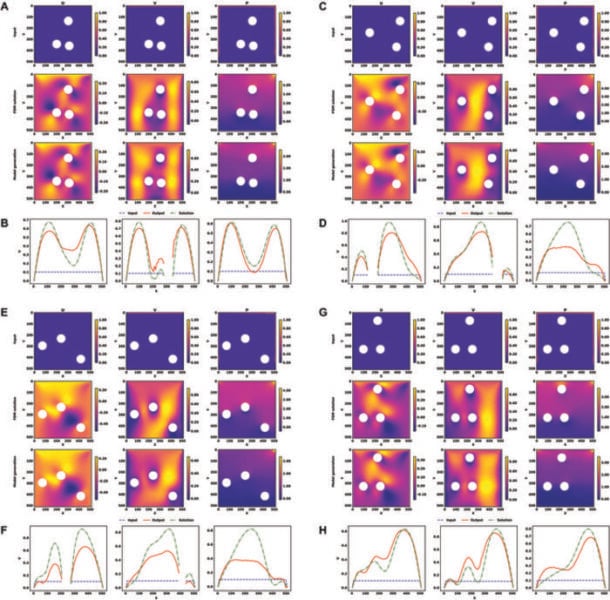A new deep learning approach has revolutionized the solution of Navier-Stokes equations, the cornerstone of fluid dynamics. This innovative method can provide accurate solutions in milliseconds, a dramatic improvement over traditional techniques that take seconds to compute.
Why it matters: Faster and more efficient fluid dynamics simulations could enhance a wide range of applications, from more realistic video game physics to improved hurricane forecasting and ocean current modeling. This breakthrough could lead to real-time fluid simulations on everyday devices, opening up new possibilities in various fields.
Deep Learning Meets Fluid Dynamics
Researchers have developed a novel deep learning approach that tackles one of the most challenging problems in computational physics: solving the Navier-Stokes equations. These equations, which describe the motion of fluids, are notoriously difficult to solve due to their complexity and the vast number of variables involved.
The team’s method, published in the journal Intelligent Computing, uses a series of neural networks trained in stages to approximate solutions to these equations. This approach combines the speed of machine learning with the physical accuracy required for meaningful simulations.
“Our method achieved inference latencies of just 7 milliseconds per input,” the researchers reported. This represents a thousandfold improvement over traditional finite difference methods, which typically require about 10 seconds to compute a solution for the same problem.
Beyond Speed: Adaptability and Efficiency
What sets this approach apart is not just its speed, but also its adaptability and efficiency. The researchers designed their system to work with minimal initial data, allowing it to learn and adapt quickly to new scenarios without requiring extensive pre-computed datasets.
The core of the system is based on a modified U-Net architecture, a type of neural network originally developed for image segmentation tasks. This architecture was customized to handle the complexities of fluid dynamics problems, with an encoder that compresses input data and a decoder that reconstructs high-resolution outputs.
To ensure physical accuracy, the team developed a custom loss function that incorporates both data-driven and physics-informed components. This approach allows the model to learn from data while still respecting the fundamental laws of fluid dynamics.
Implications for Real-World Applications
The potential applications of this technology are vast. Video game developers could use it to create more realistic fluid effects in real-time, enhancing the immersive experience for players. Climate scientists could leverage the speed and accuracy of these simulations to improve weather forecasting models, potentially leading to more accurate predictions of extreme weather events like hurricanes.
Ocean current modeling could also benefit, allowing for more detailed and up-to-date simulations of ocean dynamics. This could have implications for fields as diverse as marine biology, shipping, and climate science.
Moreover, the efficiency of this approach means it could potentially run on everyday digital devices, bringing complex fluid dynamics simulations into the hands of students, researchers, and professionals who may not have access to high-performance computing resources.
While this research represents a significant step forward, questions remain about how well the approach will scale to even larger and more complex simulations. Future research will likely focus on extending these techniques to handle a wider range of fluid dynamics problems and exploring their application in real-world scenarios.
Quiz:
- How much faster is the new deep learning approach compared to traditional methods?
- What type of neural network architecture did the researchers modify for their approach?
- What is one potential real-world application of this faster fluid dynamics simulation?
Answer Key:
- 1,000 times faster (7 milliseconds vs. 10 seconds)
- U-Net architecture
- Possible answers include: improved video game physics, better hurricane forecasting, or more detailed ocean current modeling
If our reporting has informed or inspired you, please consider making a donation. Every contribution, no matter the size, empowers us to continue delivering accurate, engaging, and trustworthy science and medical news. Independent journalism requires time, effort, and resources—your support ensures we can keep uncovering the stories that matter most to you.
Join us in making knowledge accessible and impactful. Thank you for standing with us!

